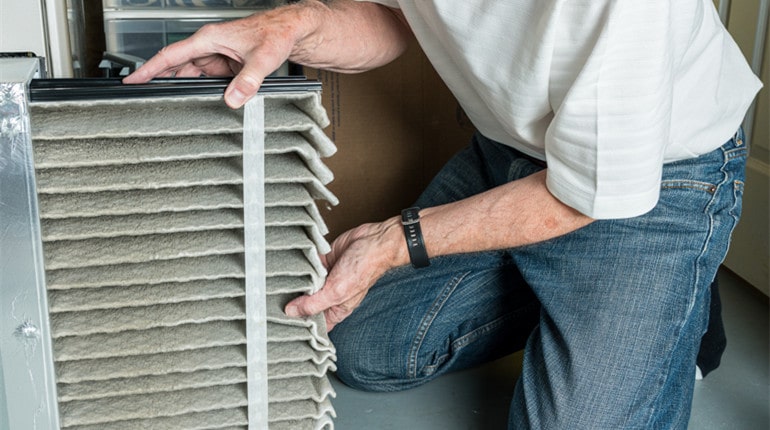As the sizzling summer sun intensifies, dependable air conditioning offers sweet respite indoors guarding family safety and comfort. But when cooling systems falter, temperatures and stress levels spike in homes lacking adequate climate control. Some HVAC issues appearing simple enough for handy homeowners to address hide tricky inner breakdowns better left to experts.
Understanding when to attempt DIY repairs versus calling trade pros protects households from preventable equipment damages and repeat breakdown aggravation when beating unrelenting heat.
Causes Behind Common Air Conditioning Problems
Before deciding whether to grab tools or a phone for assistance, recognize what typically brings cooling systems down:
Faulty Thermostat Control
Issues like loose wiring, glitchy temperature sensors and drained batteries blind the thermostat “brain” preventing proper AC unit activation despite users’ settings.
Refrigerant Leaks
Even tiny refrigerant gas leaks severely limit the core heat transfer process – forcing systems to run excessively trying in vain to reach set temperatures and leading to compressor burnout over time.
Clogged Condensate Drain Lines
AC condensate moisture normally drains away easily through designated pipes. But when algae, mold or debris blocks passageways, water overflows and ices vital interior components – causing corrosion and operational failures.
Compressor Malfunctions
The compressor continually pressurizes refrigerant gas through the AC system, facing extreme strain. Eventually, critical parts like pistons, valves and bearings wear down or break entirely – disrupting smooth functionality.
Electrical Control Deficiencies
Problems like voltage fluctuations, frayed internal wiring, faulty components or storm-related power surges lead to electrical control disruption that hinders physical AC activations.
Basic DIY Troubleshooting Before Calling Repair Companies
Upon discovering air conditioning issues, reasonable initial troubleshooting steps for handy homeowners to attempt themselves include:
- Checking condenser/handler air filters for any easy debris blockages
- Verifying room thermostat settings + battery viability
- Inspecting electrical fuse boxes and circuit breakers
- Listening for concerning operational sounds indicating mechanical defects
- Ensuring ventilation system ductwork remains intact and connected
- Draining small condensation accumulations using wet vacs if identified
If those investigative efforts fail to uncover obvious external causes behind cooling comfort loss, the wise next move involves calling qualified HVAC repair professionals for assistance. Their refined diagnostic capabilities and equipment access prove essential for remedying hidden inner breakdowns requiring component removals like burnt electrical parts or compressor valve failures.
Warning Signs Advanced Issues Demand Professionals
Certain air conditioning dysfunction symptoms clue homeowners that professional expertise lies required beyond amateur abilities. These involve:
- Complete lack of system powering on whatsoever
- Thermostat commands resulting in zero temperature change
- No cooler air emitting from duct vents
- Icing up of interior coil components from leaks/clogs
- Growing moisture pools dripping from indoor handlers
- Burning smells or loud noises arising from an external compressor
- Utility bills escalating exponentially
Rather than launching into risky guesswork tinkering which often exponentially worsens issues. The smartest response when facing such complex breakdowns involves directly contacting highly trained HVAC repair technicians instead. Their specialized tools and hands-on experience keep households protected.
Finding a Reputable Local HVAC Company
Seeking referrals from satisfied homeowners makes an excellent jumping-off point. Online searches also yield well-reviewed nearby air conditioning service contractors for further vetting. As you evaluate candidates, look for:
- Longtime community presence
- State licensing/bonding
- Proof of insurance
- Staff certification status
- Strong parts inventory access
- Fair/transparent pricing
- Quick response reputation
Check credentials ensuring companies follow proper permitting, use qualified trained technicians, and provide the amazing service that builds word-of-mouth referrals. Then review example project scopes to confirm comprehensive capabilities aligning with your household comfort needs.
While the lure of DIY cost savings entices many to attempt air conditioner repairs solo, hidden budget “gotchas” and activity delays often multiply headaches compared to simply hiring expert pros upfront. Protect homes and budgets by investing in reliable air conditioning repair and maintenance from respected industry leaders like Malek Service Company holding generations of cooling comfort expertise. Their upfront project guidance and attentive service foster long-term equipment integrity through Houston’s heat waves!
Benefits of Hiring Certified HVAC Companies
Seeking qualified experts certified in local regulations provides confidence through:
- Multi-System Technical Training
- State-of-the-Art Diagnostic Technology
- Adherence to Strict Safety Precautions
- Direct OEM Parts Inventory Access
- Energy Efficiency Optimization Skills
- Latest Methodology Applications
- Avoiding Amateur Mishaps
What to Expect During Professional AC Repair Visits
Reputable companies follow structured repair call workflow protocols:
Step 1) Thorough HVAC System Inspection
Technicians thoroughly examine the full AC system testing component functionality. They search for issues like:
- Refrigerant gas leaks
- Compressor defects
- Electrical shorts
- Drain line clogs
- Dirty filters/coils
Step 2) Diagnose Root Failure Causes
Next, they isolate specific original breakdown sources and impact on interconnected elements. Band-aid solutions get ruled out if deeper underlying issues still lurk subtly.
Step 3) Advise Repair Options & Pricing
You receive clearly outlined workshop proposals covering:
- Part/labour cost estimates
- Repair timelines
- Available rebates
This allows for selecting ideal solutions matching budgets.
Step 4) Schedule Service & Parts Arrival
On agreed project dates, technicians order all necessary components for delivery in advance so immediate repairs proceed smoothly.
Step 5) Perform System Restoration
Finally, they skillfully replace, upgrade or rebuild failed AC aspects reviving cooling capabilities to modern efficiencies. All work meets codes and best practices.
Step 6) Re-Test Performance
Before the job wrap-up, full re-checks verify temperature differentials, electrical loads, refrigerant levels, and parts security. Then… sweet relief from the heat!
Why DIY Efforts Often Disappoint
Even skilled self-starters are overwhelmed when HVAC issues cascade:
Misdiagnosing Causes – Inability to reverse engineer problems or identify downstream failures.
Lacking Equipment – Safe refrigerant handling and voltage testing require thousands of proprietary tools.
Injury Potential – Heavy units risk strains/electrocution/falls without training.
Voided Protection – Apart from code issues, unauthorized repairs void warranties.
Repeated Cash Outlays – Buying the wrong parts/tools and trying to repair issues again multiplies costs.
Prolonged Dysfunction – Attempting DIY repairs around work schedules delays addressing root causes.
Conclusion
When Houston home temperatures rise, dependable cooling offers necessary refuge guarding family safety and comfort. Learn best practices separating simple AC repairs within DIY grasp versus advanced technical issues warranting contractor intervention.
Catching small breakdowns early and investing in professional diagnosis/repairs provides sustainable cooling protection keeping households pleasant all summer. With a partner like Malek Service Company’s teams promptly restoring air conditioning capabilities across area neighbourhoods today and for years ahead – homes stay cool when the heat is on!



